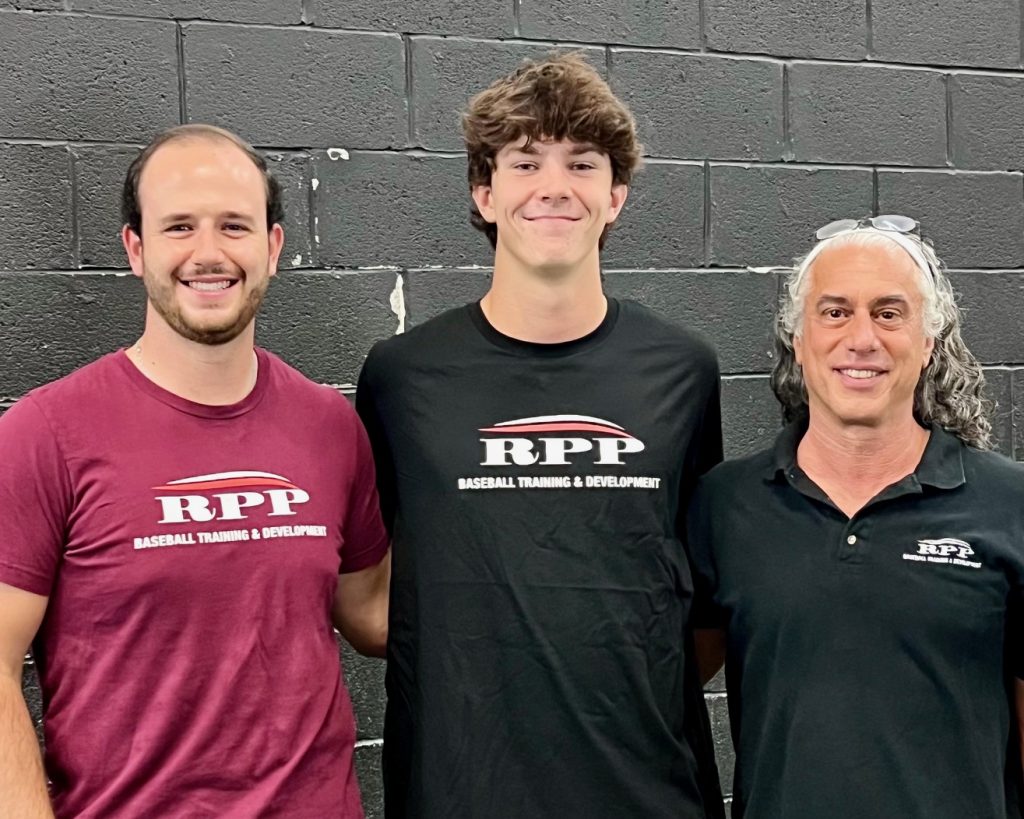
Sophomore 2-way player Graham Keen first came to RPP in June of 2022 as a 14-year-old. At the time, he was 6’2” weighing in at 150 lbs. He was already very athletic with a tall build. Fast forward to September of 2024, he has been consistently training with us year-round on a remote basis for over two years. He stopped in recently for his bi-annual assessment. He is now 6’5” weighing in at 190 lbs., having added a couple inches and 40 lbs. in lean muscle mass. His pitching velo is T92 mph on the Trackman and his exit velo hit is 100+ mph. He is now ranked #2 Nationally by PBR in his 2027 Class. Whether you think rankings are relevant or not, #2 nationally by PBR says something. He is only a sophomore and he is already Elite.
Let’s review his recent assessment report, which leaves NO stone unturned!
Body Composition
At 190 lbs. and 6’5”, Graham has a weight to height ratio of 2.47x. He has come a long way from June 2022, when his ratio was 2.02x. We are generally looking for a 2.5-3.0x ratio for elite athletes, and Graham is just about there from a body composition standpoint.
Most athletes his age have a difficult time adding weight and Graham is no different. But he is getting it done. In his recent visit, he informed us that he is eating 6-7 “meals” per day, probably in excess of 4000 calories, to achieve his objectives.
In addition, his body fat percentage is at 7%, which is excellent.
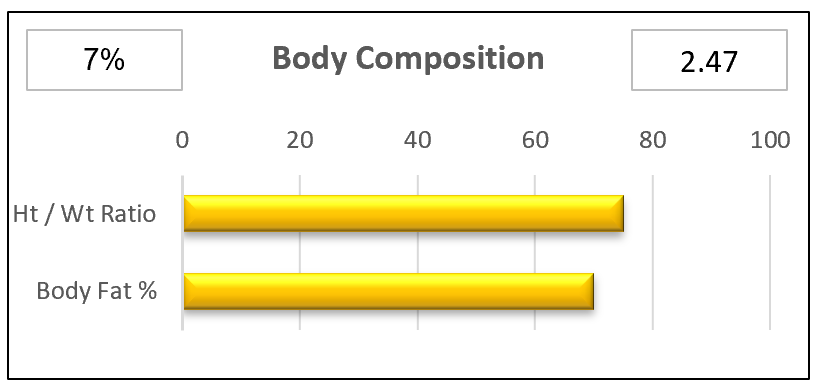
Strength
Testing max strength helps us determine the focus of our training programs once the assessment is done. This enables us to prioritize the athletes training in the weight room whether it be Strength (> 80% 1RM) or Power (between 30-80% 1RM). We utilize VBT to help better pinpoint an athlete’s 1RM during the assessment.
What is strong enough?
For us, “strong enough” is the point at which we feel gains in max strength no longer transfer to improvements in performance of the sport. Below highlighted in the color RED, is what we deem “strong enough” for Graham, given his current Body Weight (BW).
-
- Trap Bar Deadlift – 2.25 x BW >> 425 lbs.
- Leg Squat – 55% BW >> 105 lbs.
- Bench Press – 1.25 x BW >> 235 lbs.
Graham’s strength metrics in the weight room are impressive for a sophomore in high school by any measure and is a great example of what it takes “strength-wise” to put up the kind of numbers that he is putting up both on the mound and behind the plate.
-
- Trap Bar Deadlift – 428 lbs.
- Single Leg Squat – 102 lbs.
- Bench Press – 190 lbs.
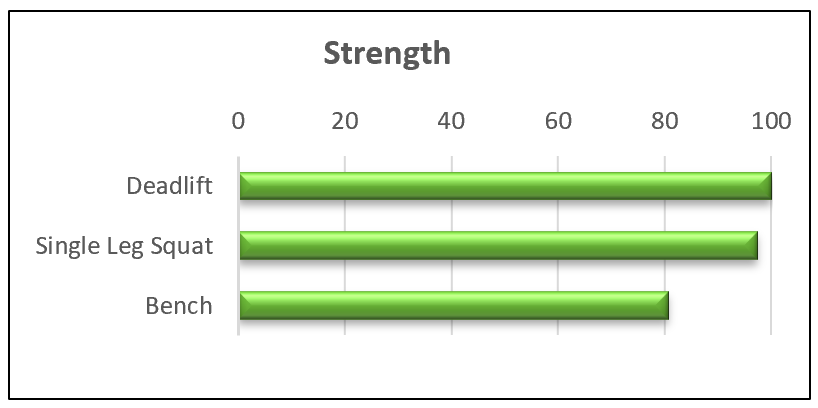
Power
Although strength is paramount, in the game of baseball it’s power or explosiveness that we are looking for.
People refer to baseball as a game of inches. In reality it’s really all about how quickly you can deliver that force.
Lower Half – We assess lower half power on VALD Force Plates, with a CMJ Jump and a Squat Jump. These tests allow us to measure not only how much force you’re producing but how quickly you’re producing it.
Graham’s lower half force production metrics are on par with many of the Division 1 athletes we recently test in the South.
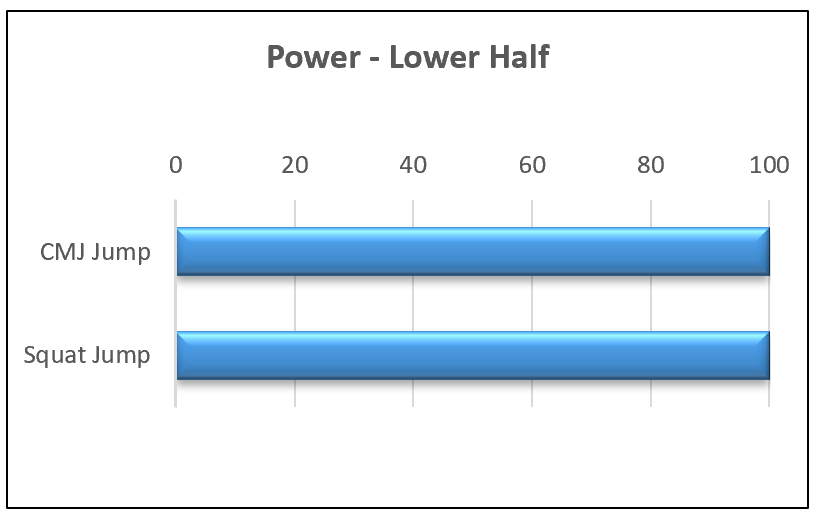
Upper Half – We test upper half rotational power on a Proteus Motion machine, utilizing two different tests:
-
-
-
- Trunk Rotation – Similar to the squat jump this involves no “pre-stretch”
- Plyo Trunk Rotation – Same movement with a “pre-stretch
-
-
Graham’s upper half Proteus metrics once again show great power metrics for any athlete, let alone a high school sophomore.
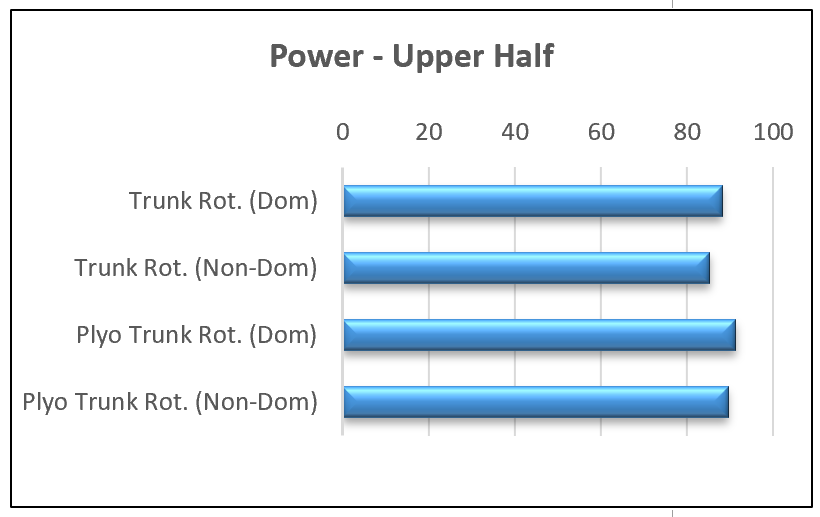
Force / Velo Profile
Once we tested Graham’s lower half and upper half numbers on the force plates and Proteus, we can now look at the difference between his force production and his velocity. This allows us to create a force /velo profile (see below). We like to see differences between force and velocity to be within 10% for an athlete to be considered “well-balanced”.
Here, we see Graham is a bit heavier on the force side of power. As a result, we will adjust his training this off-season to include more training to improve his velocity and acceleration.
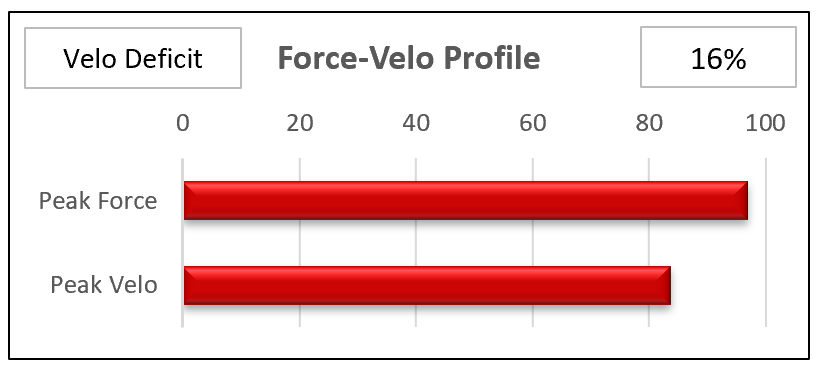
Elasticity
Elasticity is the body’s ability to store and release elastic energy from connective tissues, namely the tendons. This is also known as the “stretch-shortening cycle”. Building more elastic / spring-ier athletes begins to transition the reliance away from muscular-driven movement and more towards a reliance on the power of connective tissue.
The relaxation of the antagonistic muscles forces the connective tissue to produce a larger percentage of the movement. In other words, more force / power with less effort.
When testing baseline elasticity in our assessment, for the lower half, we use a CMJ and a Squat Jump off of force plates. We look at 3 major data points:
-
- Time to takeoff
- Peak power output
- Difference in power %-wise between the CMJ and the Squat Jump
For testing upper half elasticity, we once again look at the 2 Proteus Motion tests, this time focusing on his acceleration numbers instead of power.
Here, Graham shows a larger gap between his lower half and upper half elasticity. This is more than likely affecting the Force / Velo profile mentioned above.
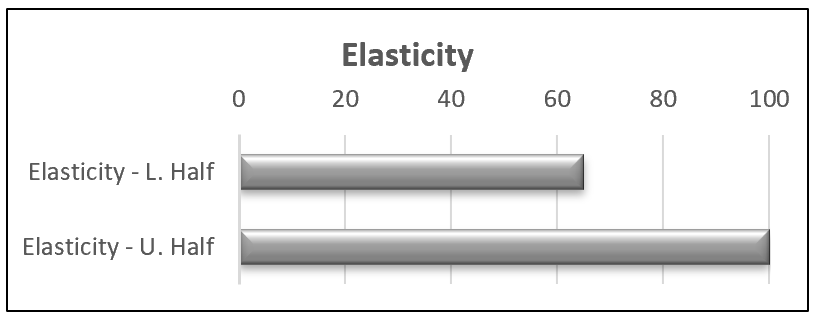
Speed
When testing speed for position players, we look at the 5-10-5 for change-of -direction speed and the 30-yd dash for acceleration/top-end speed. Graham’s metrics continue to be very impressive.
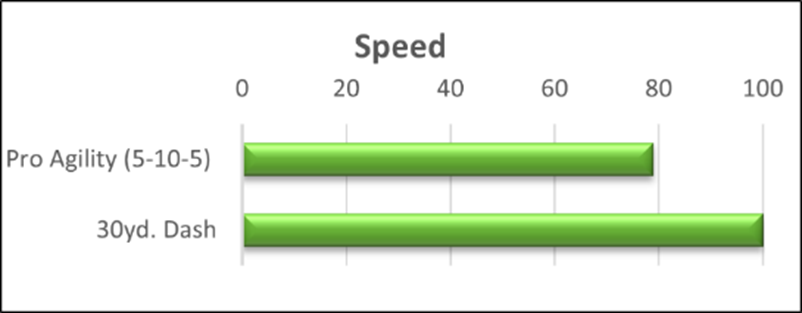
Decel
The Front Leg RSI test is how we assess the athlete’s ability to decelerate once the front foot strikes the ground. Learning to accept eccentric forces into the ground is the first step in becoming more explosive. A more stable landing when decelerating will put us in a better position to convert that force into a more powerful concentric movement. This could be jumping, throwing, batting or simply changing direction rapidly, basically any explosive movement that is initiated from the ground up.
Graham’s decel ability has improved dramatically since he joined us and much of this has to do with his lower half and single leg stability and strength numbers.

Mobility
Mobility for baseball players is like the oil in the engine. Without sufficient mobility it will be difficult to throw or hit the ball hard for long periods of time, sooner or later you could hit the wall.
Upper Body – Graham’s upper half mobility shows a bit of tightness in his lats and t-spine. This is more than likely due to playing ball for the last 6 months.
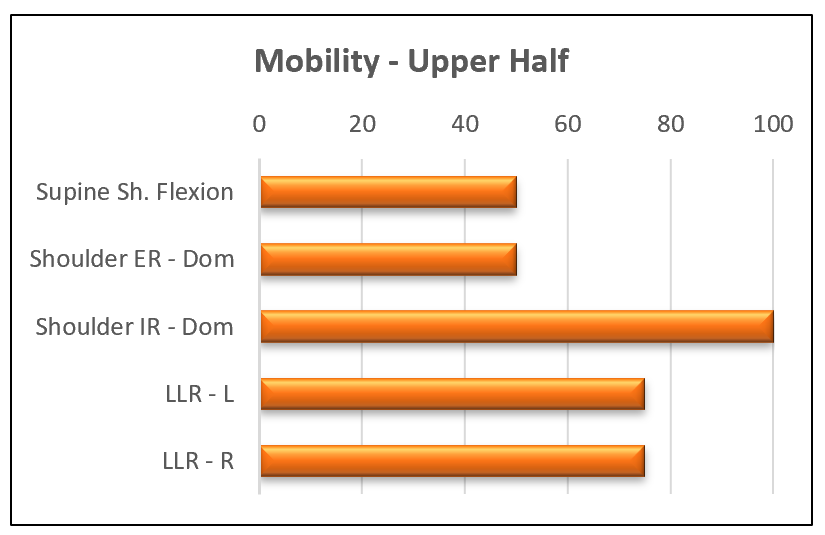
Lower Body – Graham’s lower half mobility while good once again shows tightness in his hamstrings from playing baseball all spring and summer. So, here is where we will focus his daily mobility during his warmup.
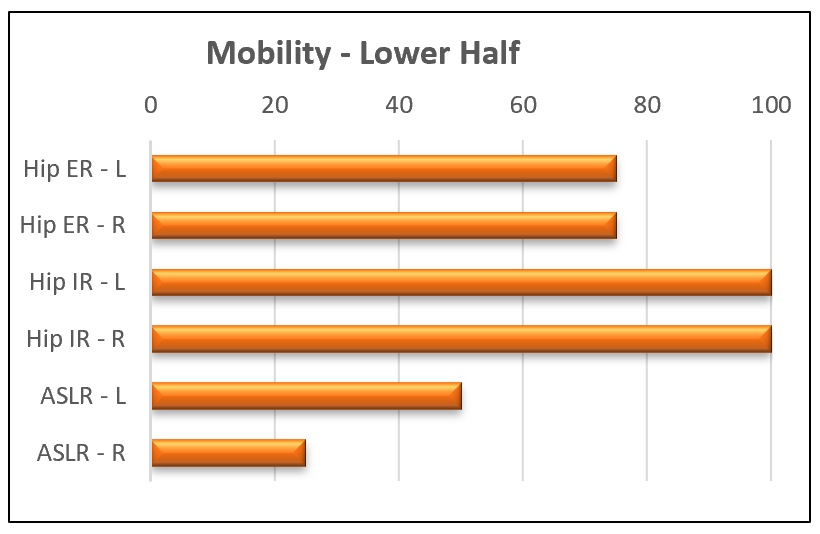
Closing Remarks
Graham Keen has come a long way since June 2022. Putting aside how hard he has worked inside the weight room and the nets to perfect his craft, let’s review what we believe he has also done extremely well to get to where he is at the moment.
-
- Following his programming from front to back – Graham keeps in constant contact with us and takes ownership of his training. He executes every single line on his programming.
- Making a full-on effort to add weight – Having increased his lean muscle mass by 40 lbs., enough cannot be said for his diligence in getting in good daily calories.
- Being consistent in his training – Graham trains consistently…YEAR-ROUND!! This also includes spring and summer while he is playing baseball.
- Getting assessed on a regular basis – Even living 6 hours away, Graham comes in to get re-assessed 2x’s / year. This allows us to get a good look at his progress.
Class 2027 – Graham Keen
-
- Exit Velo 100+ mph
- Pitching Velo T92
Congratulations Graham! KEEP UP THE GOOD WORK!

By Nunzio Signore, Matt Hartshorn and Bahram Shirazi
You live too far to train with us in-house at RPP? You can now train with us on a REMOTE basis.


